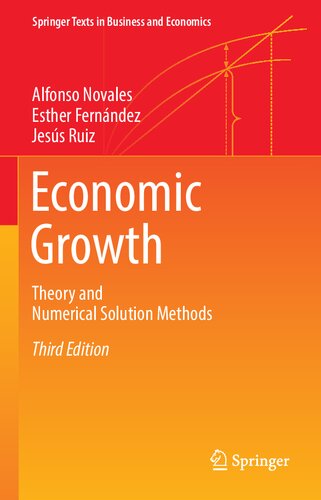

Most ebook files are in PDF format, so you can easily read them using various software such as Foxit Reader or directly on the Google Chrome browser.
Some ebook files are released by publishers in other formats such as .awz, .mobi, .epub, .fb2, etc. You may need to install specific software to read these formats on mobile/PC, such as Calibre.
Please read the tutorial at this link: https://ebookbell.com/faq
We offer FREE conversion to the popular formats you request; however, this may take some time. Therefore, right after payment, please email us, and we will try to provide the service as quickly as possible.
For some exceptional file formats or broken links (if any), please refrain from opening any disputes. Instead, email us first, and we will try to assist within a maximum of 6 hours.
EbookBell Team

0.0
0 reviewsThis is the third corrected and extended edition of a book on deterministic and stochastic Growth Theory and the computational methods needed to produce numerical solutions. Exogenous and endogenous growth, non-monetary and monetary models are thoroughly reviewed. Special attention is paid to the use of these models for fiscal and monetary policy analysis. Models under modern theories of the Business Cycle, New Keynesian Macroeconomics, and Dynamic Stochastic General Equilibrium models, can be all considered as special cases of economic growth models, and they can be analyzed by the theoretical and numerical procedures provided in the textbook.
Analytical discussions are presented in full detail. The book is self-contained and it is designed so that the student advances in the theoretical and the computational issues in parallel. Spreadsheets are used to solve simple examples. Matlab files are provided on an accompanying website to illustrate theoretical results from all chapters as well as to simulate the effects of economic policy interventions. The logical structure of these program files is described in "Numerical exercise"-type of sections, where the output of these programs is also interpreted. The third edition corrects a few typographical errors, includes two new and original chapters on frequentist and Bayesian estimation, and improves some notation.